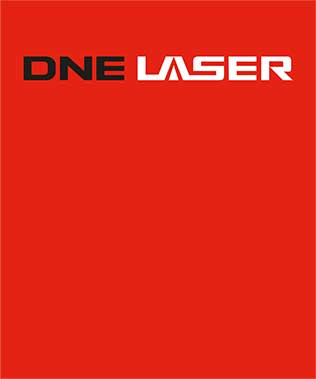The problems that laser cutting machines often encounter in the actual cutting process
Published:2021-05-27 Browse:175Editor in charge:DNE LASER
In recent years, laser cutting technology is developing at an unprecedented speed, with an annual growth rate of 15% to 20%. Since 1985, my country has grown at a rate of nearly 25% per year. Compared with traditional oxyacetylene, plasma, and other cutting processes, laser cutting speed is fast, the slit is narrow, the heat-affected zone is small, the edge of the slit is perpendicular, the cutting edge is smooth, and there are many types of materials that can be laser cut, including carbon steel, Stainless steel, alloy steel, wood, plastic, rubber, cloth, quartz, ceramics, glass, composite materials, etc.
So, what are the problems that the laser cutting machine often encounters in the actual cutting process?
Analysis of solutions to problems frequently encountered by laser cutting machines in the actual cutting process:
1. There is no response after the laser cutting machine is turned on
This kind of problem is generally caused by the output and input of the power supply, which can be solved by checking the power supply; the power supply failure is generally caused by the fuse burnt out or the problem of the power switch, which requires better and high-quality power fuse and Control switch.
2. The output light of the machine is very weak after running for a period of time
When encountering this situation, first check whether the focal length has changed. If there is no change, check whether the focusing lens on the machine has been contaminated; whether the light path system has accidentally deviated; the most important thing is to check whether the water circulation is circulating and the water circulation. The smoothness can dissipate the heat of the laser cutting machine as much as possible, improve the energy conversion of the laser equipment, and finally achieve the focus of the light source.
3. Abnormal sparks often appear when cutting thin carbon steel
We know that when laser cutting thin carbon steel, the flames are normally long and flat, with fewer split ends, and abnormal sparks will affect the smoothness and processing quality of the workpiece's cutting surface. At this time, when other parameters are normal, the loss of the laser head nozzle should be considered. If the problem exists, the nozzle should be replaced in time. In the absence of replacement of new nozzles, the cutting working gas pressure should be increased. If the thread at the connection between the nozzle and the laser cutting head is loose, the laser cutting should be suspended immediately, check the connection status of the laser cutting head, and reinstall the thread.
4. The processed round hole or straight-line deformation
When this kind of failure occurs, we should first rule out whether the laser cutting control software is moving normally. For example, draw a straight line to observe whether the laser head moves in a straight line during processing. This can basically eliminate the possibility of software problems. At the same time, this step can also find abnormal problems of looseness in the mechanical structure. After excluding software and mechanical possibilities, we should think about whether the laser energy is too high, and the non-processing area is affected by the high energy. Observe whether the cutting edge of the workpiece is melted, the normal processing edge should be smooth and flat. When this happens, we should appropriately lower the laser power or frequency parameters to solve the problem. There is also a relatively uncommon one. Defects such as the deformation of the focusing lens in the laser head can also cause such problems. It can be judged by observing whether the beam from the laser head is concentric or not.
5. The workpiece often has burrs
The workpiece often has burrs. We must give priority to the factors that cause the burrs during the cutting operation, and cannot blindly increase the cutting speed, because they blindly increase the speed, in the actual cutting process, it is very easy to see the sheet not being cut through. This situation is particularly prominent when processing aluminum-zinc coated sheets. At this time, other factors of the machine tool should be taken into consideration to solve the problem, such as whether the nozzle should be replaced or the guide rail movement is unstable.
6. The laser is not completely cut
The reason for this kind of problem: check whether the selection of laser nozzle matches the thickness of the processed plate, replace the nozzle or process the plate; check whether the laser cutting line speed is too fast, you need to control and reduce the line speed according to the actual plate condition.
 Bystronic (Shenzhen) Laser Technology Co., Ltd.
Bystronic (Shenzhen) Laser Technology Co., Ltd.